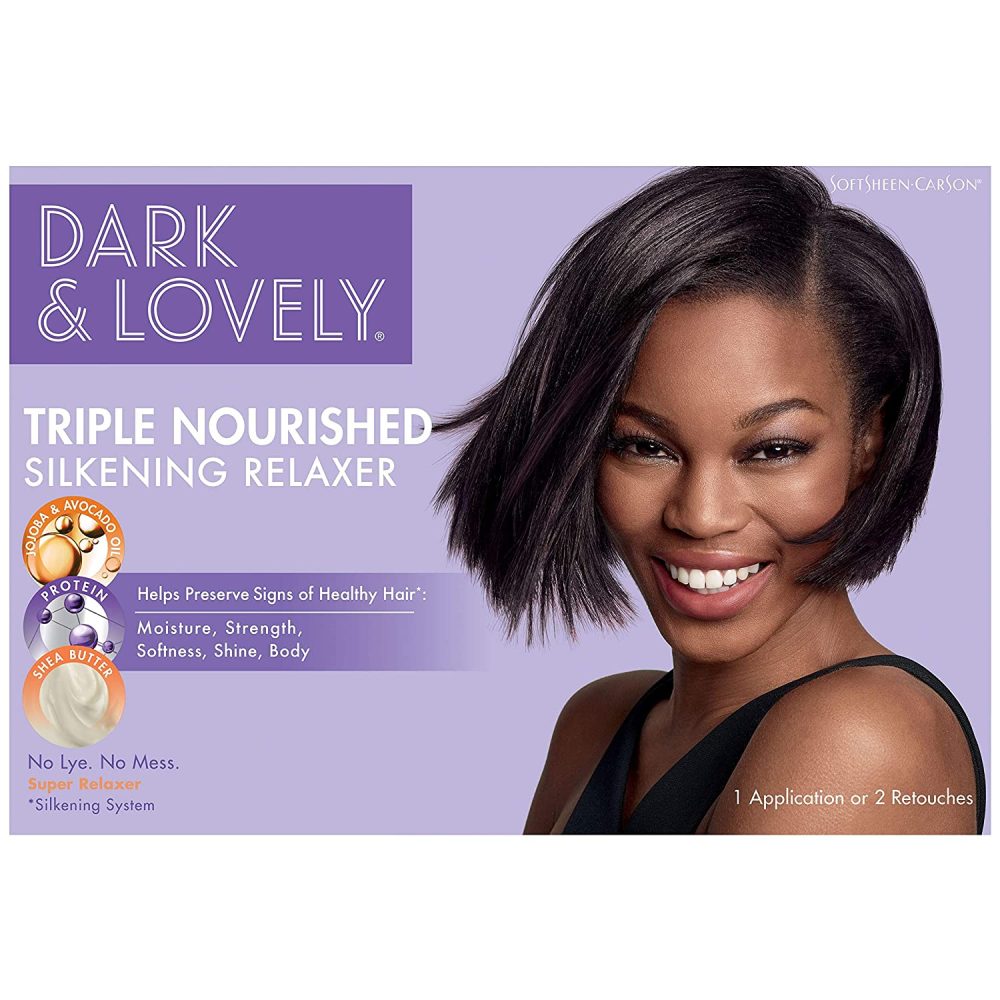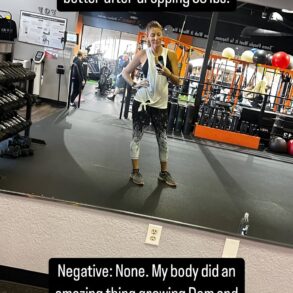
Our lawyers are reviewing hair relaxer cancer lawsuits in all 50 states. Our focus is on
Our law firm is concentrating our efforts on the following:
- Dark & Lovely, Ultra Sheet, etc., (L’Oréal, the most prominent defendant, a company worth nearly $225 billion)
- ORS Olive Oil Hair Relaxer (Namaste, LLC)
- Just for Me (TCB Naturals/Godrej Consumer Products)
- Motions (Strength of Nature Global, LLC)
- Revlon (which is in bankruptcy but appears to have good insurance coverage for chemical hair straightener claims)
Our attorneys also review chemical hair straightener lawsuits involving Optimum Salon and other hair perms and hair straightener products.
Hair Relaxer Class Action Lawsuit Update
Our law firm has been and will be the leading source of news, updates, and information about hair relaxer lawsuits in this country. Our attorneys are committed to keeping our clients and other victims informed. So bookmark this page and come back for the latest information.
March 8, 2024 – Pretrial Discovery Rulings
The magistrate judge in this litigation held a status hearing yesterday, covering three main topics:
- Special Master Selection: The judge considered potential candidates for the role, and Professor Maura Grossman was asked to provide an affidavit to disclose any potential conflicts of interest. Parties will have a chance to review the affidavit and file objections.
- Legacy System Discovery: A schedule was set for resolving disputes over responses to interrogatories, with deadlines for informing defendants of deficiencies (by March 13, 2024), resolving disputes (by March 18, 2024), and filing briefs (by March 22, 2024).
- Search Methodology Agreement: Parties must submit a Joint Status Report by April 5, 2024, with updated information on efforts to reach agreements on search methodologies. The Court is likely to adopt a proposal that requires completion of these efforts within 30 days after the appointment of a Special Master.
The next hearing is scheduled for April 11, 2024, at 11:00 a.m.
March 7, 2024 – Dismissal with or Without Prejudice
There is a dispute in MDL-3060 regarding the procedure for dismissing cases. Plaintiffs advocate for the right to voluntarily dismiss their complaints without prejudice or to amend them before defendants file an answer. They argue that defendants’ wholesale refusal to consent to such dismissals obstructs standard MDL practice and unnecessarily burdens the court with motions.
The defendants assert that according to Rule 41 and CMO 8, plaintiffs must obtain consent from all answering defendants for dismissals without prejudice after answers are filed. They contend that allowing dismissals without prejudice would undermine MDL procedures, potentially leading to forum shopping and increased costs for defendants.
Our view, not surprisingly, is that it is absurd to argue that plaintiffs cannot voluntarily dismiss their case at this stage of the litigation, particularly when you consider that it may be that some of these people cannot participate in discovery because the are sick either from cancer or the treatment for it.
March 5, 2024 – HIH Subpoena
Defendant Revlon issued a subpoena to the National Institutes of Health on February 14, 2024, requesting various documents related to the 2021 White et al. study and the 2022 Chang et al. study.
Plaintiffs’ lawyers PLC plans to filed a Motion to Quash this subpoena prior to the return date of March 15, 2024.
March 1, 2024 – 117 New Cases Added to MDL
At one point last year, the hair relaxer class action MDL was adding thousands of new cases each month and it was on pace to grow to over 10,000 cases before the end of 2023. Those predictions never came true as things cooled off starting in November. Last month, 117 new cases were added. That brings the current total up to 8,334.
February 22, 2024 – Special Master for Electronic Discovery
In our last update, we talked about the Defendants’ reservation about the need for a Special Master (refer to Document No. 436). Both parties have now agreed to the Honorable Paul Grimm (retired) for this role. Our firm is familiar with Judge Grimm. He is an amazing judge and extremely fair.
Of course the defendants have to have some silly detail they want to push. So the the Defendants want a monthly cap of $10,000 on the Special Master’s fees and costs, citing Rule 53’s emphasis on fairness and protection against excessive expenses or delays. Okay…
The Plaintiffs oppose the fee cap. At the anticipated hourly rate for Judge Grimm is around $750, that would limit him to roughly 13 hours of work per month under the proposed cap—a duration likely insufficient even for drafting and presenting briefs on the various complex issues.
February 10, 2024 – Special Master in Hair Relaxer Litigation
The defendants filed a motion this week opposing the appointment of a special master, which they say is unnecessary.
What is special master? Often in MDLs, the judge will appoint someone else to oversee a particular aspect of a case. This role is typically assigned to manage complex issues that require expertise or focused attention, such as overseeing discovery processes, administering settlements, or ensuring compliance with court orders, to ensure efficient and fair resolution of specialized or technical matters within the litigation.
The defendants have specific objections to Philip Favro due to past relationships they say that might question his impartiality. Instead, they propose the appointment of retired Judge Sidney Schenkier if a special master is to be appointed, citing his extensive experience and impartiality as more suitable for addressing the litigation’s ESI discovery issues.
February 7, 2024 – Hair Relaxer Class Action Lawsuit #2
Our law firm is handling cases related to hair relaxer personal injury and wrongful death lawsuits.
There is another category of lawsuits related to hair relaxers that focuses centers on economic loss rather than personal injury. These cases involve plaintiffs who have not necessarily suffered physical harm but claim economic damages due to misleading product information or lack of proper warnings regarding the risks associated with these products.
So this class action lawsuit filed against L’Oreal, Revlon, Inc., and other hair product companies alleges that these companies sold hair relaxer products which not only posed an increased risk of uterine and ovarian cancer but also lacked sufficient warning about this potential risk. The complaint emphasizes that the products specifically targeted women of color and resulted in economic harm to the consumers.
How does that work? The gist of the claim is that the plaintiffs argue they paid more for these products than they would have if they had been aware of their hazardous nature. Additionally, some plaintiffs have incurred medical monitoring costs to detect and treat potential cancers early.
In response, the defendant companies have filed a motion to dismiss the lawsuit in the US District Court for the Northern District of Illinois. They argue that the plaintiffs lack standing because they have not suffered a legally sufficient injury. The companies contend that mere exposure to a potentially harmful ingredient, without personal injury damages and solely based on economic injury from purchasing and using the products as expected, does not constitute an injury in fact.
We do not handles consumer class action lawsuits. Our focus remains on addressing the physical injuries and fatalities resulting from these products. But from what I do know about these consumer class action, these claims seem to be very viable.
February 2, 2024 – MDL Adds 200 More Cases
191 new cases were added to the hair relaxer class action MDL over the month of January 2024. That brings the current number of pending cases in the MDL up to 8,217. This appears to be the new average volume after seeing 2,000 to 3,000 new cases per month last summer.
January 31, 2024 – New Lawsuit
A new hair relaxer lawsuit was filed yesterday against only L’Oreal. The plaintiff in Grinston v. L’Oreal USA was diagnosed with uterine cancer in 2022 in Illinois. Plaintiff used the short form Complaint that is used in the MDL.
January 22, 2024 – Hair Relaxer and Three Types of Cancer
We are still in the infancy of understanding how many diseases are caused by hair relaxers. Our lawyers think there are three types of cases we can prove right now:
- Uterine cancer: the research linking the two is strong
- Endometrial cancer: our lawyers are taking Type 1 and Type 2 cases but the link for Type 1 is stronger than Type 2
- Ovarian cancer – our lawyers are taking non-serous and serous cases but the link for non-serous cases is stronger than serous.
Types of Endometrial Cancer
Type 1 and Type 2 endometrial cancers are distinct subtypes with notable differences. Type 1 often presents with symptoms like abnormal uterine bleeding. Histologically, it consists of well-differentiated, lower-grade tumors with a more favorable prognosis.
Type 2 affects older women. It tends to manifest with fewer noticeable symptoms in its early stages and comprises poorly differentiated, higher-grade tumors that are more aggressive.
Type 2 requires more aggressive interventions, including surgery, radiation, chemotherapy, and targeted therapies. Type 1 often responds well to surgical removal of the uterus and potential adjuvant therapies depending on tumor characteristics and stage.
Types of Ovarian Cancer
Ovarian cancer is divided into two main categories:
Serous Ovarian Cancer, which includes high-grade serous carcinoma (HGSC) known for its aggressiveness, and low-grade serous carcinoma (LGSC) with a less aggressive nature; and
Non-Serous Ovarian Cancer comprises several subtypes like endometrioid, mucinous, clear cell, and undifferentiated carcinomas, each with unique characteristics and prognosis outcomes.
January 19, 2024 – The Path to Trial
The plaintiffs propose the parties submit a bellwether trial list by February 1, 2024, focusing on ovarian, endometrial, and uterine cancers. (Defendants suggest a broader category of injuries.)
Here is the plaintiffs’ proposed calendar:
| Date | Event |
|---|---|
| February 1, 2024 | Deadline for filing and serving cases to be included in bellwether eligibility |
| July 15, 2024 | Selection of Initial Bellwether Discovery Cases |
| November 15, 2024 | Completion of Core Discovery for Initial Bellwether Cases |
| March 21, 2025 | Plaintiffs to provide expert reports |
| April 21, 2025 | Defendants to provide expert reports |
| May 12, 2025 | Plaintiffs to disclose rebuttal expert reports |
| July 18, 2025 | Completion of expert witness depositions |
So if you are asking when will the hair relaxer lawsuit be settled, this scheduling order provides the best possible tea leaf.
Why? Because in a class action lawsuit like the hair relaxer MDL, settlement amounts are offered when a trial date is imminent. This schedule portends a trial date in late 2025 (hopefully).
January 15, 2024 – MDL Passes 8,000 Cases
It has not even been a full year since the hair relaxer class action MDL was created and it already has over 8,000 pending cases. The MDL passed the 8,000 after 42 new cases were added over the last month.
January 8, 2024 – Judge Sets Deadline for Plaintiff Fact Sheets
Before Christmas, a framework was outlined for selecting and processing potential bellwether trials in the hair relaxer lawsuit, with the initial trial proposed for November 3, 2025, and a second one on February 2, 2026. This plan aims to identify representative cases from a large pool, each involving various products and injuries. As we have been telling you, trial dates are key to forcing the defendants to make reasonable settlement offers to women with cancer from hair relaxers. Would it be better if the trials were in 2024? Absolutely. But the wheels move slowly in MDLs, and there is not much that can be done about it.
Judge Rowland issued a case management order on December 19, requiring all plaintiffs to complete Plaintiff Fact Sheets. A plaintiff fact sheet in an MDL class action lawsuit is a standardized questionnaire asking individual plaintiffs about their claims and involvement in the case. So, it is information for the defendants that provide relatively detailed information about each plaintiff’s injuries related to hair relaxers; most notable for this litigation is the specific chemical hair straighteners used.
For those who filed claims by June 30, 2023, the deadline to submit these fact sheets is 45 days from the order. Claimants who filed between July 1 and August 31, 2023, have a 60-day deadline, while those filing from September 1, 2023, until the order date have 120 days. Any new cases filed post-December 19 are given 45 days to submit a thoroughly completed Plaintiff Fact Sheet.
January 1, 2024 – MDL Grants Plaintiffs’ Motion to Compel
In the final days of 2023, Judge Rowland partly granted a motion to compel discovery filed by the plaintiffs relating to information about hair care products sold outside the U.S. Judge Rowland also imposed a deadline of 2/29/24 on the defendants for responding to interrogatories.
New Hair Relaxer Lawsuit
A product liability lawsuit was filed last week against cosmetic company L’Oreal. It is the first of many hair relaxer cancer lawsuits that will be filed. The suit alleges that chemicals in the company’s hair relaxer products caused uterine cancer. This lawsuit and others like it may pave the way for a hair relaxer class action that alleges these products cause uterine cancer.
In this post, we will look at the allegations in this in this suit, including the scientific evidence on causation. Our attorneys also discuss the likelihood of more hair-relaxer lawsuits and what the potential per person settlement amounts for a chemical hair straightener lawsuit be.
Hair Relaxer Products
Hair relaxers are a group of cosmetic products primarily used by African American women to relax, flatten and straighten their hair.
All hair, regardless of ethnic origin, shares common characteristics in its chemical makeup and molecular structure. The hair shaft, lying in the center and growing up through the follicle, emerges from the scalp as threadlike structures. These hair fibers are each composed of three distinct regions: the cuticle and the outermost area consisting of lamellar layers of structural tissue. The cortex, the inner area comprising the bulk of the fiber, and the medulla (the innermost area lying at the center of the fiber).
High PH Systems
Hair relaxers are high-pH systems containing a strong alkali and are formulated as thick cream emulsions. Chemical hair relaxers are applied to the base of the hair and left in place for a “cooking” interval. The bonds found in the hair are located within the keratin proteins. The most important type of bond found in the hair is the disulfide bond, also known as the cysteine bond.
Keratin is very sensitive to increases or decreases in the hydrogen ion concentration (or pH) of its environment. Although it is relatively resistant to the action of acids, keratin can be broken down by high-pH alkali solutions. This property is precisely what is exploited during relaxing.
How Hair Relaxers Work
The chemicals in hair relaxers are applied to the base of the hair shaft. After the marination period, the hair relaxer changes the hair’s texture by compromising the hair’s protein structure. The effect of this protein damage straightens and smooths the hair.
After a period of weeks (4 – 8 weeks on average), depending on the hair’s natural growth rate, the treated portion of the hair grows away from the scalp as new growth sprouts from the roots, requiring additional relaxer treatment to smooth the roots.
These additional treatments are colloquially referred to in the community as “re-touches”, resulting in women relaxing their new growth every four to eight weeks on average, usually for decades.
The application loosens the hair’s tight curls and removes its kinkiness through a chemical reaction that breaks the disulfide bonds in the hair. This potent mix of chemicals in the products attacks the hair’s protein structure, causing it to flatten.
EDCs and Phthalates in Hair Relaxers
As the Complaint in the Mitchell case underscores, hair relaxer products are known to contain very high levels of endocrine-disrupting chemicals (“EDCs”). EDCs are chemicals that interfere with the endocrine system and interfere with hormone receptors. EDCs are present in hair products under the guise of “fragrance” and “perfumes,” and thus enter the body when these products are exogenously applied to the hair and scalp. Phthalates, estrogens, and parabens are the EDCs typically found in hair products.
EDCs can act directly on hormone receptors, on proteins that control hormone delivery, or disrupt the endocrine system in various ways. EDCs can cause the body to operate as if there were a proliferation of a hormone, resulting in over-responding to a stimulus or responding when it was not supposed to by mimicking a natural hormone. They can increase or decrease hormone levels by affecting the production, degradation, and storage of hormones, and can block hormone stimuli by inducing epigenetic changes, altering the structure of target cells’ receptors, or modifying DNA that regulates gene expression.
Exposure to EDCs is linked to numerous adverse health outcomes such as endometriosis, impaired sperm quality, abnormalities in reproductive organs, various cancers, altered nervous system and immune function, respiratory problems, metabolic issues, diabetes, obesity, cardiovascular problems, growth, and neurological and learning disabilities. Specifically, EDCs have the potential to cause several hormone-dependent cancers, including ovarian cancer.
Black women of reproductive age tend to have higher biomarkers of exposure to EDCs. No one could get their minds around the racial disparities in women’s health outcomes when it came to fibroids, endometriosis, and uterine cancer. But now it is starting to make more sense.
DEHP
The other problematic chemical in hair relaxers is phthalates. Phthalates, often called “plasticizers,” are chemicals used to help make certain plastics more durable. Phthalates are commonly used in a wide variety of various cosmetic products, including chemical hair relaxers. Phthalates are known to interfere with natural hormone production.
The hair relaxer products manufactured by the defendants all contained phthalates, including Di-2- ethyl hexyl phthalate (“DEHP”). DEHP is a highly toxic manufactured chemical. It is not found naturally in the environment.
DEHP is considered a carcinogen. It is known to cause significant adverse-health effects including endometriosis, developmental abnormalities, reproductive dysfunction and infertility, and various cancers.
Other chemicals in hair straightening products include formaldehyde and parabens. Which of these toxins in hair relaxers most contribute to causing cancer? We are still figuring that out.
Why use these chemicals in hair relaxers if they can cause such harm? It works and it is cheap. Every Dark & Lovely lawsuit and other hair relaxer lawsuits will allege the manufacturer knew of the risks. Yet they did nothing to prevent these women from getting cancer because it was cheaper and easier to use cancer-causing chemicals. If this is the evidence that a jury hears at trial, you will see large jury payouts that will ultimately lead to a significant class action hair relaxer settlement.
Lack of Federal Oversight Over These Chemicals
Making matters worse, the government provides little control over chemicals used for perms and hair straighteners. Yes, the Fair Packaging and Labeling Act requires an ingredient declaration on cosmetic products. But the FDA is not minding the store. Compounding the problem, there is no law requiring the listing of the individual fragrance or flavors, or ingredients. So potentially cancer-causing phthalates are not listed as long as they are combined with a fragrance. It is ridiculous and hair relaxer lawsuits might be a catalyst for a change in the law. Until then, consumers do not know the ingredient declaration if phthalates are in the product they are using.
Uterine Cancer
There are two different types of uterine cancer: endometrial and sarcoma. Endometrial uterine cancer is much more common and more treatable. The sarcoma type of uterine cancer is less common, but it is much more aggressive and difficult to treat.
Uterine cancer is a relatively common type of cancer. Around 65,000 new cases of uterine cancer are diagnosed each year in the U.S. This equates to around 3.5% of all new cancer cases annually. Around 12,500 women died from uterine cancer each year, which accounts for about 2% of cancer-related deaths.
The overall 5-year survival rate for uterine cancer is comparatively high at 81%. However, the sarcoma type of uterine cancer is much more aggressive and has a lower survival rate.
Uterine cancer has long been assumed to be caused by phthalate metabolites found in hair perms and relaxer products.
The hair relaxer uterine cancer lawsuit in Mitchell alleges that “uterine cancer is associated with phthalate metabolites found in hair care products.” Uterine cancer is the 4th most common type of cancer in women. The incidence rate of uterine cancer in black women is twice that of white women in the United States.
The Complaint cites a significant medical study that recently found that women who used chemical hair relaxer products have a higher risk of contracting uterine cancer. The study was published in the Journal of the National Cancer Institute in October 2022. The study found that an estimated 1.64% of women who never used chemical hair straighteners or relaxers would go on to develop uterine cancer by the age of 70.
Here is the key statistic that makes you stop in your tracks: for frequent users, that risk more than doubles, increasing to 4.05%.
Hair Relaxer and Ovarian Cancer
Ovarian cancer is comparatively rare with only 20,000 cases diagnosed in the U.S. each year. This is less than 1% of all cancer cases. The 5-year survival rate for ovarian cancer is only 47%, which is much lower than uterine and breast cancer. The biggest reason for this low survivability rate is that ovarian cancer typically has no symptoms in its early stages and there is no simple way to monitor it. As a result, most ovarian cancer cases are not diagnosed until they have reached more advanced stages at which point the cancer has already spread and is less treatable. This is mostly because ovarian cancer has very few symptoms in its earlier phases and is usually
There is solid scientific evidence linking chemical hair relaxers to higher rates of ovarian cancer. The source of this evidence is Sister Study being conducted at NIH. The NIH research team published an article in a medical journal in October 2021 reporting that the study data showed an association between the use of chemical hair relaxers and higher rates of ovarian cancer. The Sister Study indicated that women who used hair relaxer products 4 times per year or more had a 50% increased risk of ovarian cancer.
Do Hair Perms Also Have Uterine Cancer and Other Risks?
Getting a hair perm may expose you to the same risks as you would using a hair relaxer. Why? Because many of the same cancer-causing toxins in hair chemicals are used during hair smoothing treatments at the salon. So may also see hair perm lawsuits flowing from this litigation.
Is There a Hair Relaxer Class Action Lawsuit?
There is not a hair relaxer class action lawsuit as of January 2023. But there was a hearing on whether there will be a federal hair relaxer class action lawsuit on January 27, 2023 We are awaiting the court’s ruling.
So right now, our lawyers are looking at these as individual hair relaxer lawsuits, not a class action. But given the volume of new cases our law firm has been getting, a class action for hair relaxer victims already seems inevitable.
What is the Statute of Limitations for Hair Relaxer Lawsuits?
Is it too late to file a hair relaxer lawsuit? The answer will depend on the applicable statute of limitations in your state. A statute of limitations is a legal deadline on how long plaintiffs have to file a case. If plaintiffs do not get their case filed before the statute of limitations deadline, their claim will be barred and they will never be able to sue.
Each state has its own unique statute of limitations for personal injury cases like hair relaxer lawsuits. The length of the deadline to file a hair relaxer lawsuit varies by state. (Lookup the statute of limitations in all 50 States) If you are thinking about filing a hair relaxer lawsuit, what matter is not how long the limitation period is, but when that SOL period starts to run.
In most states, the start date for the statute of limitations is based on the application of the “discovery rule.” Under this common law rule, the statute of limitations period does not begin to run until the plaintiff knows (or reasonably should know) that they have a potential lawsuit.
The example below will help illustrate how the discovery rule might apply to a typical hair relaxer case:
Jane was diagnosed with uterine cancer 7 years ago. She has used chemical hair relaxer products regularly since she was 15. Jane recently heard from a friend that hair relaxers might cause uterine cancer and that people are filing lawsuits against the cosmetic companies that make these products. Jane’s state has a 2-year statute of limitations on injury claims. It has been more than 2 years since Jane was diagnosed with uterine cancer, but her state follows the discovery rule. Under the discovery rule, the 2-year SOL on Jane’s lawsuit does not begin to run until October 2022, which is when the study linking hair relaxers to uterine cancer was first published. Before that date, Jane had no way of reasonably discovering that she had a claim because there was no published evidence linking hair relaxer to cancer.
Unfortunately, the result in our example above might be different in some states. A minority of states have declined to follow the discovery rule and hold that the SOL period begins to run from the date of the plaintiff’s injury. In Jane’s case that would be when she was diagnosed with cancer 7 years ago. Some states have a law called a “statute of repose” which puts a maximum time limit (usually 7-12 years) on bringing a claim regardless of whether the discovery rule applies or not.
Potential Settlement Amounts for Hair Relaxer Uterine Cancer Lawsuits
It is very premature to speculate on how much hair relaxer uterine cancer lawsuits could be worth at trial or in a settlement. We still don’t know whether the scientific causation evidence in these cases will hold up in court. But the scientific evidence our lawyers have reviewed looks unbelievably strong which is why you are seeing so many lawyers putting up television commercials for victims with uterine cancer or other injuries who are looking to bring a hair relaxer lawsuit.
What Will Be the Average Hair Relaxer Compensation Payout?
Our lawyers believe that a strong uterine cancer case could have a potential settlement payout between $100,000 to $1,500,000. Realistically, the average settlement amount will be a the lower end of the scale. Cases involving particularly young plaintiffs could be worth significantly more since uterine cancer typically results in permanent infertility.
The expected payout for a trial? It would be much higher. You could see verdicts in the hundreds of millions and even the billions as we have seen in the Roundup litigation with similar injuries.
Digest this average hair relaxer settlement amount projection with the caveat that it is early in the hair straightener litigation. Still, we can still speculate on the likely settlement amounts of these cases. If we assume that the causation evidence linking chemicals in hair relaxer to uterine cancer is adequate,
Settlement payout will also be a function of the defendants in individual claims. L’Oréal has plenty of money to pay fair settlement amounts and jury payouts. But some of these smaller companies will likely have issues paying out fair settlement value for these claims.
Has Anyone Won a Hair Relaxer Settlement or Verdict?
No hair relaxer cases have gone to trial or even settled as of March 2024. In mass tort cases, settlements tend either cover all of the plaintiffs or groups of plaintiffs, segregated by injury or by individual law firms.
How Would a Hair Relaxer Settlement Work?
A hair relaxer settlement will be complicated becasue there are many different defendants with different levels of culpability. But the most likely scenario is settlements with individual attorneys with a settlement system based on points to distribute the funds equitably among the victims. Such a system would operate on objective criteria, ensuring that victims in similar circumstances receive similar settlements. Utilization of a points-based system is a widely recognized and accepted approach for distributing settlement money among claimants in collective compensation deals.
Uterine Cancer Settlements and Verdicts
Below are summaries of settlements and verdicts from prior cases in which uterine cancer was the primary injury. This might give us a lens to settlement amounts and jury payouts for a chemical hair relaxer or hair perm lawsuit. These are not product liability lawsuits. They are medical malpractice cases in which the plaintiffs are alleging that the doctor negligently failed to diagnose uterine cancer.
- $1,800,000 Settlement (Illinois 2020): failure to diagnose uterine cancer in a 41-year-old plaintiff from Chicago resulted in a 4-year delay in treatment allowing cancer to progress. There is a big difference between a delay in diagnosing cancer and causing cancer from a jury’s perspective. And… a doctor who makes an innocent mistake is also a more sympathetic defendant that a company that put toxic chemicals in their product without telling anyone.
- $500,000 Settlement (Washington 2018): failure to diagnose due to poor communication resulting in a 5-month delay of uterine cancer in a 71-year-old plaintiff with a prior history of cancer.
- $600,000 Settlement (New York 2015): failure to send an ultrasound report caused a delay in the diagnosis of uterine cancer in a 35-year-old woman. Despite the young age of the plaintiff, the settlement amount is likely lower because she did not plan on having more children.
- $430,000 Settlement (Minnesota 2014): doctor settled the case for allegedly failing to diagnose uterine cancer in a 60-year-old patient resulting in a 2-year delay and progression of cancer to stage 3C.
- $1,750,000 Settlement (Massachusetts 2013): failure to diagnose uterine cancer in 52-year-old plaintiff resulting in the spread of cancer to lungs and progression to the terminal stage.
There are different issues in these lawsuits – mostly medical malpractice – that you would see in a hair straightener lawsuit against L’Oréal or another one of these defendants. But malpractice cases are often hard to prove. If these claims are strong, the harm is serious and the settlement amount could be very high.
Contact Us About Filing a Hair Relaxer Cancer Lawsuit
Our firm is currently investigating product liability cases alleging that chemicals in hair perm and hair relaxer products cause uterine cancer. If you were diagnosed with uterine cancer after years of regularly using a chemical hair straightener, contact our office today for a free consultation at 800-553-8082 or get a free online consultation.
This post was originally published on this site be sure to check out more of their content.









